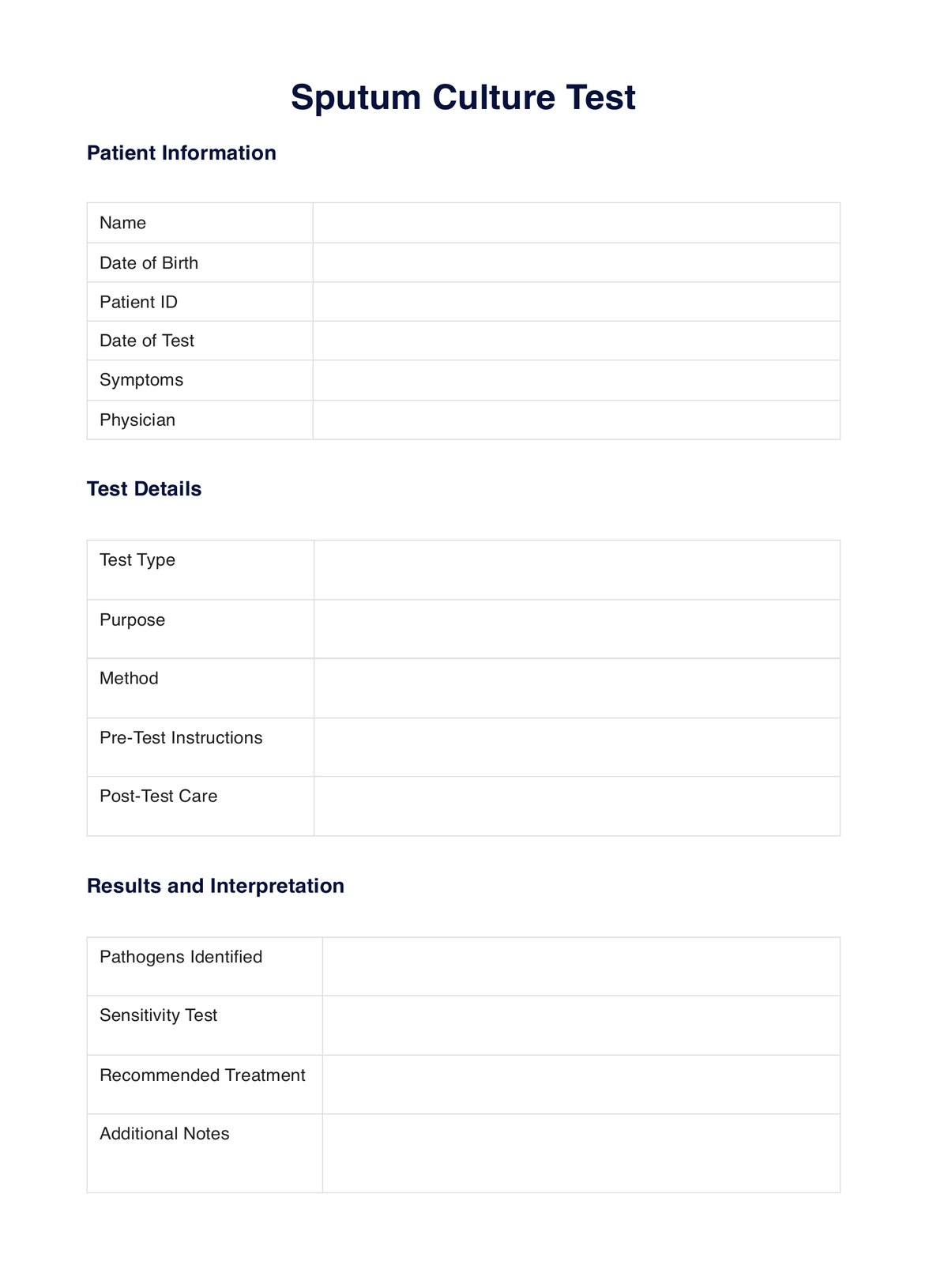A Sputum Culture Test is used to diagnose bacterial or fungal infections in the lungs or airways, such as pneumonia, tuberculosis, or bronchitis.

Sputum Culture Test
Uncover the essentials of Sputum Culture Testing with our comprehensive guide. Learn how Carepatron streamlines the process for healthcare professionals.
Use Template
Sputum Culture Test Template
Commonly asked questions
To collect a sputum sample, cough deeply to produce mucus from the lungs, then spit it into a sterile container provided by your healthcare provider.
No, a Sputum Culture Test is designed to detect bacterial and fungal infections, not viral infections. Other tests are used to diagnose viral respiratory infections.
EHR and practice management software
Get started for free
*No credit card required
Free
$0/usd
Unlimited clients
Telehealth
1GB of storage
Client portal text
Automated billing and online payments











